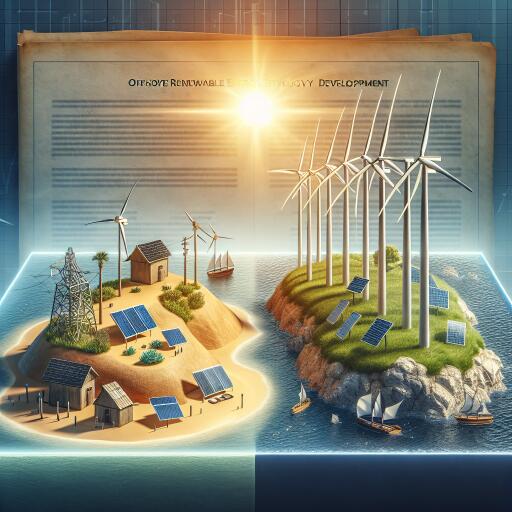
Revolutionizing Offshore Renewable Energy Development in the U.S.
Under the guidance of Secretary of the Interior Deb Haaland, the United States has taken a significant leap forward in the development of offshore renewable energy. The upgraded regulations, a product of collaborative efforts by the Bureau of Ocean Energy Management (BOEM) and the Bureau of Safety and Environmental Enforcement (BSEE), aim to modernize and simplify the process for offshore wind energy projects along the U.S. Outer Continental Shelf (OCS).
This groundbreaking change not only enhances the deployment of offshore wind projects by making regulations more straightforward but also promises considerable cost savings. Over the next two decades, the industry is set to save an estimated $1.9 billion. These savings have the potential to lower consumer costs and facilitate further investment in clean energy ventures, potentially creating numerous job opportunities.
“As the offshore wind industry evolves, so must the frameworks that govern it. Our mission is to ensure a cleaner energy future by laying down the groundwork for the efficient and safe execution of offshore wind projects. This initiative underscores our dedication to preserving vital natural and cultural resources while promoting clarity and ease for developers,” Secretary Haaland remarked during her speech at the 2024 International Partnering Forum.
The recent enhancements include the introduction of a regular update process for a five-year offshore wind leasing schedule. Secretary Haaland unveiled a plan consisting of up to 12 potential offshore wind energy lease sales set to occur by 2028. The move aligns with the Biden-Harris administration’s approval of the nation’s first eight commercial-scale offshore wind projects, capable of generating over 10 gigawatts of renewable energy – enough to power nearly 4 million households.
In addition to bolstering the economy through clean energy, these regulatory improvements aim to establish a sustainable offshore wind industry. Enhanced workforce training, development of a domestic supply chain, and improved engagement with various stakeholders including Tribes, fisheries, and underserved communities are among the focal points of this initiative.
“With nearly 15 years since the initial offshore renewable energy regulations were enacted, it’s time for an update. These revised rules aim to alleviate unnecessary burdens on the industry while maintaining our commitment to safe and environmentally responsible renewable energy development,” BOEM Director Elizabeth Klein explained. She, alongside BSEE Director Kevin Sligh, detailed their agencies’ commitment to fostering a clean energy future.
BSEE’s Director Sligh highlighted the importance of the new rule for ensuring environmental protection and safety for offshore workers. “Our goal is to establish clear, enforceable regulations that protect our oceans and all forms of life. BSEE’s approach to regulation includes a comprehensive safety management system and a well-defined Certified Verification Agent process, ensuring the production of clean, safe offshore energy for future generations,” Sligh stated.
The initiatives reflect a broader push under the Biden administration to revitalize the American economy through ‘Bidenomics’ and the Investing in America agenda. These efforts focus on invigorating the economy by supporting middle-class growth, encouraging private sector investment in manufacturing and clean energy, and tackling climate change challenges.
The regulatory revisions and proactive leasing strategy underscore the United States’ commitment to leading in the sustainable production of offshore wind energy. With the installation of the nation’s first two commercial-scale offshore wind projects and comprehensive plans for future development, the U.S. is setting a global standard for renewable energy production.





Leave a Reply